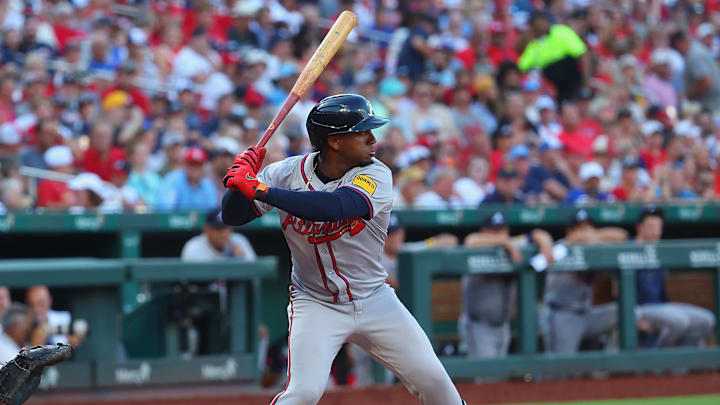Ozzie Albies' return couldn't have come at a better time. Their offense, up until their recent outburst in Cincinnati, floundered with the Braves in the middle of a playoff race. Looking to help strengthen the lineup while there are still games to be played, Albies has decided to go without his lefty batting helmet to speed up his recovery timeline.
Ozzie Albies is doing things.
— Bally Sports: Braves (@BravesOnBally) September 16, 2024
We repeat.
Ozzie Albies is doing things‼️ pic.twitter.com/iC6ByBn8ai
While several writers, including myself, have been calling Albies to drop switch-hitting for years now, however, it's important to temper expectations over the last week and a half of the season.
Braves fans shouldn't expect Ozzie Albies to dominate right-handed pitching
Since 2017, Atlanta Braves second baseman Ozzie Albies has the 15th-best wRC+ in the majors when facing left-handed pitching. With a 146 wRC+, Albies has had more success against lefties than teammates Ronald Acuña Jr, Austin Riley, and Jorge Soler, among many, many others.
It's easy to see these results and assume that getting a righty-only Albies is like getting a player who hits at a Mookie Betts caliber for the rest of the season, but unfortunately, it's not that simple.
.@ozzie has now homered in FOUR straight games!#ForTheA pic.twitter.com/LwW4I1cqE7
— Atlanta Braves (@Braves) September 8, 2021
Even excluding the fact that the 27-year-old is returning from a wrist injury where he's not 100% when coming back (although we'll get to that), Albies only has six real plate appearances versus a right-handed pitcher when hitting right-handed, two of which came against knuckleballer Steven Wright.
In those six plate appearances is 1-5 with one homer, one strikeout, and one walk. He never saw a pitch faster than 91.4 MPH, a pitch which he struck out on.
In his rehab assignment, Albies faced a right-handed pitcher five times, singling twice as his two hits and hit the ball in play for his other three outs. He maxed out with a 96.2 EV on a groundout.
Of course, making inferences off a single game's sample is a foolish thing to do (otherwise you could project Shohei Ohtani to finish the season with a 1.000 OPS and 486 homers), but it's interesting to note he did hit the ball much softer than when he was facing a lefty.
While hitting right-handed on the whole, Albies has refused to walk, even more so than he does from the left side of the plate), taking a free pass just 4.2% of the time. If he continues to swing as frequently as he does while hitting right-handed against righties, where pitches are moving away from his barrel, he might be in store for more weak contact.
Lastly, it's important to remember that Albies isn't 100%. While he said his wrist feels fine when swinging right-handed, his left hand is still involved in his swing. Expecting a player to dominate pitching from a side of the plate he's hardly seen pitches from while also not being fully healthy would be unreasonable.
However, even if Albies can manage a league-average bat over the final nine games of the season, he might help push the team into the postseason.
